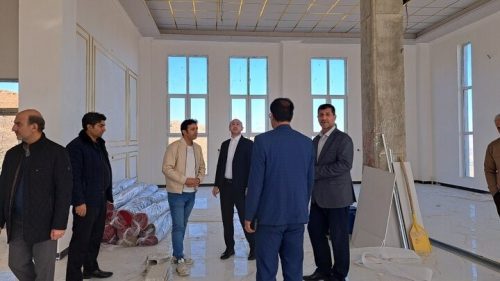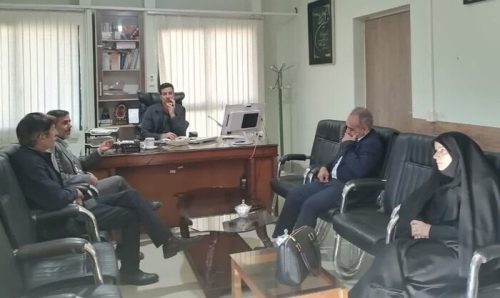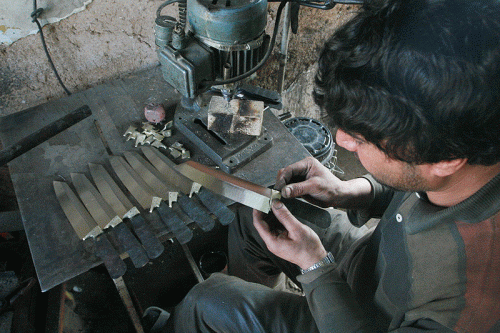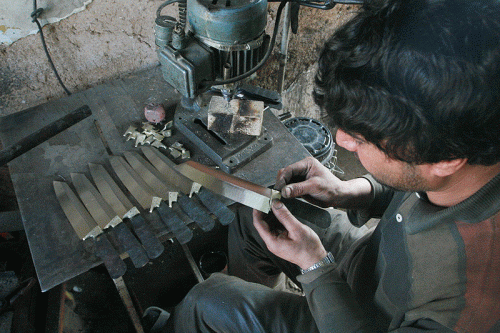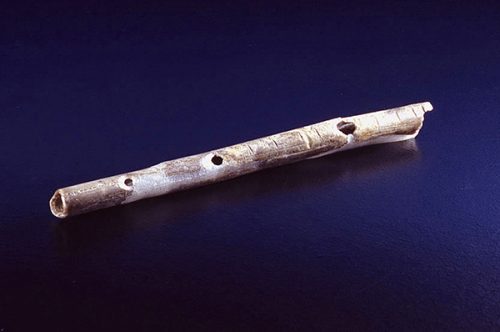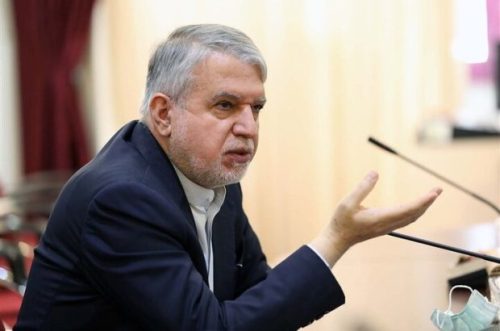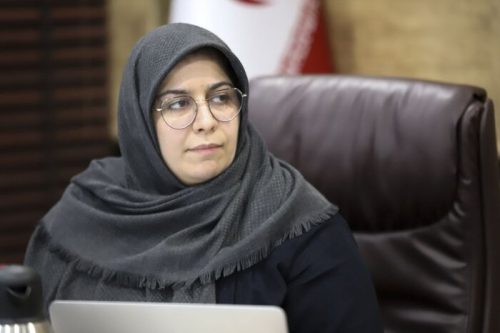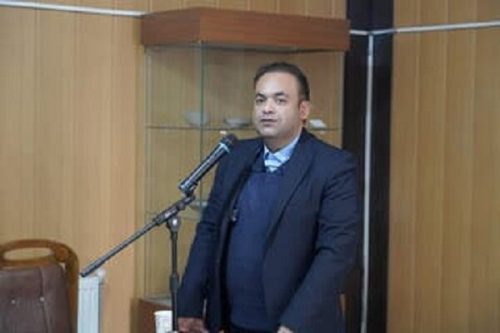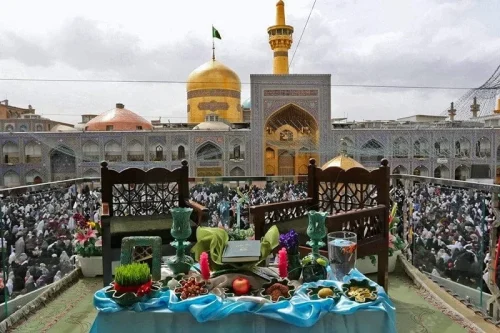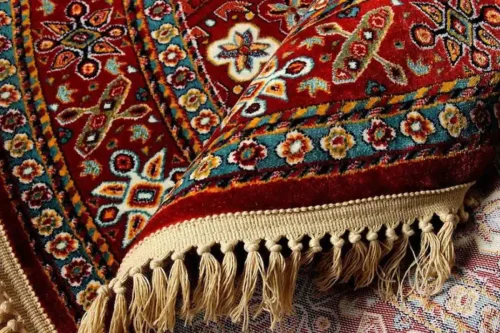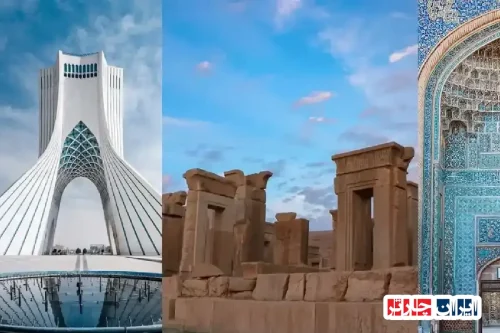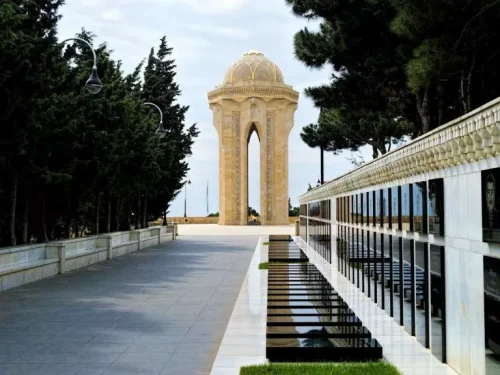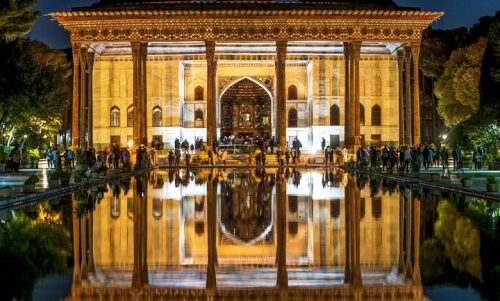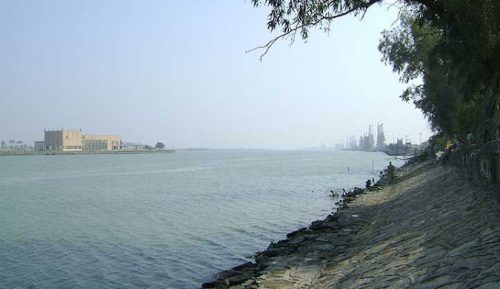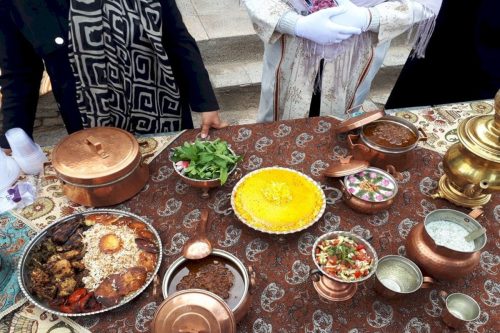Recovered Museum Treasures: FARAJA Arrests Key Suspect at Shah Nematollah Vali Museum
In a dramatic turn of events that has captured international attention, the recent operation resulting in the arrest of a key suspect at the Shah Nematollah Vali Museum has ushered in a renewed commitment to preserving cultural heritage. The headline “Recovered Museum Treasures: FARAJA Arrests Key Suspect at Shah Nematollah Vali Museum” reflects not only a milestone in the fight against illicit art trafficking but also highlights the complex interplay between law enforcement and the safeguarding of priceless artifacts. Investigators have revealed that months of exhaustive research, surveillance, and intelligence gathering led to this arrest, which is being celebrated as a major breakthrough in curbing the illegal movement of cultural property. Far from being an isolated incident, this case is now seen as part of a broader strategy to return artifacts to their rightful places, secure national history, and restore public trust in the mechanisms that protect heritage and legacy.
The operation that culminated in the arrest was meticulously planned and executed by highly trained personnel under the aegis of FARAJA, whose dedicated efforts have helped retrieve items that were unlawfully removed from museum collections. The headline “Recovered Museum Treasures: FARAJA Arrests Key Suspect at Shah Nematollah Vali Museum” serves as a reminder of the critical importance of vigilance and cross-agency collaboration in tracking down those who attempt to profit from the exploitation of cultural objects. Detailed forensic analysis, data from surveillance networks, and traceable financial transactions all played a significant role in piecing together the puzzle behind the distribution of stolen artifacts. The investigation not only focused on the illicit trade and transportation of these items but also on unraveling the complex network of interactions between criminals and intermediaries, shedding light on how vulnerabilities within museum security systems can be exploited.
This landmark arrest has sparked a wider conversation about the protocols and procedures that govern cultural institutions worldwide. In the wake of the recovery, experts and historians are engaging in robust debates regarding the ethical responsibilities to which museums and heritage bodies are held. The successful recovery process and the decisive FARAJA operation emphasize that the phrase “Recovered Museum Treasures: FARAJA Arrests Key Suspect at Shah Nematollah Vali Museum” is not merely a news headline but a wake-up call to authorities and cultural custodians alike. When heritage institutions face threats from sophisticated criminal networks, the need for comprehensive security measures and international cooperation becomes crucial. Discussions now center around how new technologies, including digital tracking and enhanced forensic methods, can revolutionize artifact recovery and prevent future instances of cultural looting. This dynamic environment demands that all stakeholders, from law enforcement officials to museum directors, embrace a proactive approach in protecting legacy items that carry the weight of national memory.
The recovery of these treasures has also reinvigorated efforts to review legislative frameworks and refine operational tactics across borderlines and diplomatic channels. The case encapsulated in “Recovered Museum Treasures: FARAJA Arrests Key Suspect at Shah Nematollah Vali Museum” reveals not only the criminal elements involved in art theft but also the challenges inherent in synchronizing local investigations with international legal procedures. Lawmakers are now reviewing existing policies to close loopholes that may allow smuggling networks to flourish. Institutional reforms, better data sharing among international agencies, and regular security audits of cultural institutions are all measures that are being debated to ensure that future heritage loss is minimized. The story behind this recovery underscores the delicate balance between the preservation of history and the imperatives of modern security — a balance that must be continually recalibrated in light of emerging threats and evolving criminal tactics.
Beyond the immediate legal and protective measures, the cultural and societal repercussions of this event promise to be far-reaching. The astonishing recovery of items once lost to the clandestine world of art smuggling—and the subsequent arrest detailed in “Recovered Museum Treasures: FARAJA Arrests Key Suspect at Shah Nematollah Vali Museum”—has reinvigorated debates among scholars regarding restitution, cultural identity, and the role of museums as keepers of collective memory. As communities rally behind requests for justice and call for stronger protective legislation, the recovery also opens up new avenues for collaboration between cultural institutions, law enforcement, and international heritage organizations. This incident is now a benchmark case study in academic curriculums related to cultural heritage management, criminology, and international law. It encourages a comprehensive approach where preventive measures are as celebrated as recovery efforts, prompting discussions on how best to implement long-term strategies for both artifact protection and legal prosecution of art crimes.
The ramifications of this decisive action resonate beyond national borders. International agencies and cultural watchdogs have praised the initiative, viewing it as a potential model for similar operations worldwide. The meticulous methodology that led to “Recovered Museum Treasures: FARAJA Arrests Key Suspect at Shah Nematollah Vali Museum” stands as a testament to the importance of incorporating advanced technologies and fortifying communication channels between different jurisdictions. The success of the operation is inspiring similar countries that struggle with the theft of heritage items to adopt more robust practices that not only focus on immediate arrests but also on preventive intelligence gathering and public awareness. By harnessing modern investigative techniques and fostering inter-agency cooperation, the incident signals a transformative era in the protection of cultural assets—a shift where recovery and prevention mutually reinforce each other, setting the stage for more secure artistic and historical repositories.
Moreover, communities across the country are beginning to see the operation as a reaffirmation of national pride and cultural resilience. Citizens are encouraged to take a more active role in safeguarding cultural memory, whether through supporting museum security initiatives, engaging with heritage preservation programs, or simply advocating for stricter measures against art theft. The narrative thread of “Recovered Museum Treasures: FARAJA Arrests Key Suspect at Shah Nematollah Vali Museum” has now woven itself into broader discussions about loyalty, cultural identity, and the collective responsibility of society to honor and preserve history. Educational institutions, cultural organizations, and local governments are exploring innovative ways to commemorate the recovered treasures, ensuring that the lessons learned are embedded in future policies and community outreach programs.
In conclusion, the arrest detailed in “Recovered Museum Treasures: FARAJA Arrests Key Suspect at Shah Nematollah Vali Museum” is more than just a headline—it is a clarion call for renewed vigilance, enhanced security measures, and a deepened commitment to protecting cultural heritage. This unprecedented event exemplifies how decisive law enforcement actions, when combined with international cooperation and advanced forensic techniques, can safeguard the treasures of the past. The recovery sends a resounding message that the convergence of dedicated investigation, modern technology, and a unified resolve can counter the complexities of art smuggling networks. As experts further analyze the case and implement robust preventive strategies, the recovery of these museum treasures will stand as a milestone in the relentless pursuit of justice and cultural preservation. It affirms the belief that history, in all its splendor, must be preserved for future generations and that every recovered artifact is a victory over the forces that seek to erase cultural identity.
Current Status of Recovered Museum Treasures: FARAJA Arrests Key Suspect at Shah Nematollah Vali Museum and the State of Stolen Cultural Assets in Society
Today, societies around the world are increasingly aware of the challenges posed by stolen cultural assets, and the case of “Recovered Museum Treasures: FARAJA Arrests Key Suspect at Shah Nematollah Vali Museum” has intensified this discussion. Communities note that losses incurred by the illegal trade of historical and artistic items greatly affect both economic stability and cultural identity. The recovery of these treasures has revealed shortcomings in current monitoring systems and legal frameworks, urging authorities and cultural stakeholders to reexamine and redesign security strategies. In many regions, heightened incidents of art theft, combined with sophisticated criminal networks, demand prompt and coordinated responses. This incident, emblematic of a larger problem, has emphasized the need for high-standard surveillance practices and inter-agency collaboration. Its impact has not only sparked public debate but has also compelled decision-makers to recognize the intrinsic value of cultural heritage and to strive for stronger protection measures. As discussions evolve, the significance of this case is reflected in efforts to integrate traditional security protocols with modern investigative techniques, ensuring that the legacy enshrined in museums is safeguarded for future generations.
Economic and Cultural Implications of Recovered Museum Treasures: FARAJA Arrests Key Suspect at Shah Nematollah Vali Museum
The arrest following the dramatic recovery of museum treasures has far-reaching economic and cultural consequences. On the economic front, the illicit removal and trafficking of priceless artifacts result in significant financial losses, disrupt local economies, and undermine efforts to preserve national revenue generated through heritage tourism. Culturally, the disappearance of historical objects not only robs communities of their past but also affects national identity and collective memory. The case of “Recovered Museum Treasures: FARAJA Arrests Key Suspect at Shah Nematollah Vali Museum” illustrates the strong interlinkage between art recovery and cultural revitalization, where safeguarding relics contributes to reinforcing societal pride. By bringing criminals to justice, this operation has highlighted the importance of cleaning up shadow markets for cultural items and revitalizing the institutions tasked with their protection. In light of these events, experts emphasize that robust economic strategies—coupled with cultural education—are essential to rebuild trust and restore the integrity of cultural institutions that represent the heritage of nations.
Collaboration Among Judicial, Enforcement, and Community Sectors in Confronting Recovered Museum Treasures: FARAJA Arrests Key Suspect at Shah Nematollah Vali Museum and Related Thefts
The success of the operation involving “Recovered Museum Treasures: FARAJA Arrests Key Suspect at Shah Nematollah Vali Museum” underscores the critical importance of collaboration among judicial authorities, law enforcement agencies, and the broader community. Effective exchange of information and shared expertise have proven essential in tracking the intricate networks responsible for art smuggling. Cooperation across different sectors not only accelerates investigations but also maximizes the potential for recovering stolen items, thereby reducing the chance of repeated losses. Communities play an influential role by providing local intelligence and advocating for transparent measures, which help in building a unified front against cultural crimes. The case demonstrates that when legal institutions and security operatives join forces with civic participation, the recovery and safeguarding of heritage artifacts become far more achievable. Such integrated efforts contribute to long-lasting reforms in how stolen heritage items are managed and reinstated to their rightful custodians.
Role of Modern Technologies in Tracking and Recovering Recovered Museum Treasures: FARAJA Arrests Key Suspect at Shah Nematollah Vali Museum
In the era of digital innovation, modern technologies have become invaluable tools in the recovery of stolen cultural assets, as exemplified by “Recovered Museum Treasures: FARAJA Arrests Key Suspect at Shah Nematollah Vali Museum.” Advanced forensic techniques, artificial intelligence-driven data analysis, and sophisticated tracking systems have all played roles in piecing together the complex puzzle of art smuggling. These technological advancements facilitate the real-time monitoring of artifacts and enable law enforcement agencies to trace illicit transactions with greater precision. By integrating digital platforms, security agencies can streamline the exchange of vital information and pinpoint vulnerabilities in existing museum security systems. Ultimately, the use of innovative technology not only helps in the immediate recovery of stolen items but also serves as a deterrent for future criminal activities by exposing and disrupting organized trafficking networks.
Successful Recovery Experiences: Case Studies of Recovered Museum Treasures: FARAJA Arrests Key Suspect at Shah Nematollah Vali Museum
Examining successful recovery experiences provides valuable insights into effective strategies for protecting cultural heritage. The high-profile operation under the banner of “Recovered Museum Treasures: FARAJA Arrests Key Suspect at Shah Nematollah Vali Museum” stands as a testament to what coordinated, informed actions can accomplish. Similar case studies, drawn from various parts of the world, underline the significance of blending human expertise with technological innovations. These success stories offer practical lessons in evidence gathering, intelligence sharing, and inter-agency cooperation. They also highlight the ability of well-organized teams to respond effectively to emerging threats in cultural security. By learning from these experiences, institutions can refine their procedures, tighten security protocols, and ultimately restore public faith in the mechanisms designed to preserve the treasures of the past.
Legal and Oversight Strategies for Protecting Recovered Museum Treasures: FARAJA Arrests Key Suspect at Shah Nematollah Vali Museum
A robust legal framework and vigilant oversight are pivotal in ensuring that recovered cultural treasures remain safeguarded in the long term. The decisive actions taken in “Recovered Museum Treasures: FARAJA Arrests Key Suspect at Shah Nematollah Vali Museum” have prompted critical discussions about closing regulatory gaps that allow art trafficking to thrive. Strengthening legislation, instituting rigorous monitoring systems, and enforcing strict penalties for offenders are central to mitigating the risks associated with cultural property crimes. It is also essential for lawmakers to work hand in hand with enforcement agencies to continuously update legal measures in response to evolving criminal tactics. By reinforcing judicial processes and oversight mechanisms, societies can significantly reduce the incidence of art theft and establish a more secure foundation for preserving national heritage.
Cultural and Artistic Challenges Linked to Recovered Museum Treasures: FARAJA Arrests Key Suspect at Shah Nematollah Vali Museum
The loss and subsequent recovery of cultural assets present unique challenges that span both the artistic and heritage domains. When valuable artifacts vanish from public collections, the cultural fabric of a community is directly impacted. The operation “Recovered Museum Treasures: FARAJA Arrests Key Suspect at Shah Nematollah Vali Museum” shines a light on how stolen objects can create deep cultural voids that extend beyond mere financial loss. Recovering such items is not only about returning property but also about restoring the narrative of a nation’s historical and artistic identity. Restored artifacts contribute to the collective memory and cultural discourse, serving as tangible links to a shared past. Addressing these challenges requires a multidisciplinary approach involving art historians, curators, and cultural policymakers dedicated to both protecting legacy and renewing heritage.
Comprehensive National Strategies to Reduce Theft and Safeguard Recovered Museum Treasures: FARAJA Arrests Key Suspect at Shah Nematollah Vali Museum
Implementing comprehensive national strategies is a critical step in reducing the incidence of art theft and ensuring the lasting security of cultural heritage. The successful recovery operation, encapsulated by “Recovered Museum Treasures: FARAJA Arrests Key Suspect at Shah Nematollah Vali Museum,” has inspired discussions on the need for holistic, countrywide measures. Key aspects of these strategies include extensive public education campaigns, the integration of cutting-edge security systems, and the implementation of stringent regulatory policies that govern the handling of cultural assets. Furthermore, establishing a robust coordination framework between government bodies, private collectors, and international agencies can greatly enhance preventive efforts. Such a strategic approach not only minimizes future opportunities for illicit trafficking but also ensures that recovered treasures remain protected and accessible to the public.
A Promising Future for the Recovery of Cultural Heritage and Recovered Museum Treasures: FARAJA Arrests Key Suspect at Shah Nematollah Vali Museum
Looking ahead, the promising developments following the recovery operation of “Recovered Museum Treasures: FARAJA Arrests Key Suspect at Shah Nematollah Vali Museum” signal a transformative era for cultural heritage protection. The convergence of improved technology, legal reforms, and heightened public awareness is paving the way for more resilient security frameworks. As nations continue to refine their approaches to identifying and reclaiming stolen assets, future initiatives are expected to be even more effective. This optimistic outlook is bolstered by ongoing research, international collaboration, and the continuous evolution of investigative methodologies. Together, these factors ensure that the legacy of cultural treasures is preserved and that future generations will have the opportunity to appreciate the rich tapestry of human history. The journey toward a more secure heritage environment remains challenging but undeniably full of potential.
Frequently Asked Questions
- What happened during the theft at the historical museum?
- The incident involved the theft of valuable artifacts and ancient manuscripts from the museum, highlighting significant security breaches.
- How was the museum’s security compromised?
- The security system was weakened due to outdated surveillance equipment and insufficient monitoring, enabling unauthorized access.
- What steps have law enforcement taken to recover the stolen artifacts?
- Authorities collaborated with judicial and intelligence units, reviewing surveillance footage and other evidence to track down and apprehend those responsible.
- How were the stolen items restored to the museum?
- After careful investigations and identification of the perpetrators, the stolen artifacts were recovered and returned to the museum.
- What role does the cultural organization play in protecting historical sites?
- The cultural organization is responsible for safeguarding historical treasures, enforcing protective measures, and overseeing restoration efforts.
- How did the judicial process handle the theft case?
- The judiciary swiftly reviewed the case, gathered sufficient evidence, and initiated legal proceedings against the accused to ensure justice.
- Why is there a need for enhanced security measures at historical sites?
- Increasing incidents of theft and the cultural significance of historical artifacts warrant the implementation of advanced security and monitoring systems.
- What preventive measures are being implemented against future thefts?
- Preventive strategies include upgrading surveillance systems, installing state-of-the-art cameras, and ensuring a constant security presence.
- How can the community contribute to the preservation of historical sites?
- Community members can report suspicious activities and collaborate with authorities to help protect and preserve our cultural heritage.
- Why is it important to preserve ancient manuscripts and artifacts?
- These items are vital parts of our cultural identity and history, and their preservation ensures that future generations can appreciate and learn from them.
- What messages have been conveyed regarding the protection of historical treasures?
- Authorities and cultural organizations emphasize the importance of implementing robust security measures and support public awareness on the protection of historical treasures.
- How are theft cases managed following an investigation?
- Each case is meticulously documented and managed with dedicated investigative procedures to ensure that all evidence is properly utilized in the judicial process.
- How does inter-agency cooperation influence the resolution of theft cases?
- Collaboration between law enforcement, judicial bodies, and cultural institutions ensures rapid information exchange, leading to more effective resolution of theft cases.
- What have initial investigations revealed about the theft?
- Preliminary findings indicate that the theft was well-coordinated, underscoring the need for modernized security and vigilant monitoring.
- Have similar theft incidents occurred in the past?
- Yes, there have been previous incidents at other historical sites, which reiterates the urgency for continuous improvement in security protocols.
- What benefits do security enhancement programs bring to historical sites?
- Such programs increase public confidence, help preserve cultural heritage, and significantly reduce the risk of theft and vandalism.
- How does Iran Charter contribute to the preservation of cultural heritage?
- At Iran Charter, we are dedicated to supporting initiatives that enhance security measures and promote the preservation of our valuable cultural heritage.

